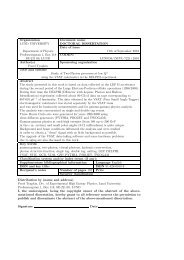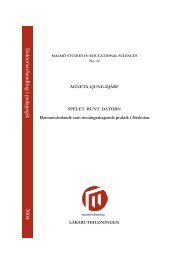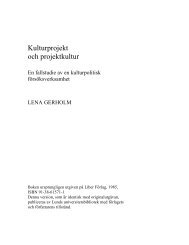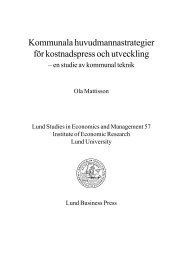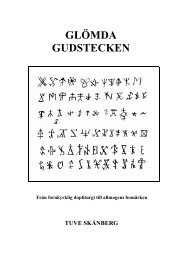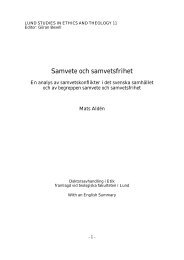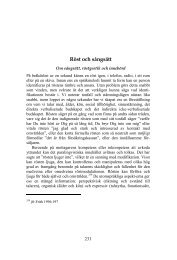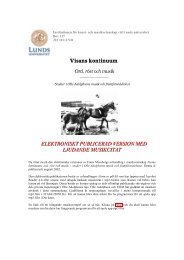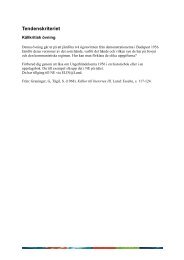Hyperpolarized Nuclei for NMR Imaging and Spectroscopy - Lunds ...
Hyperpolarized Nuclei for NMR Imaging and Spectroscopy - Lunds ...
Hyperpolarized Nuclei for NMR Imaging and Spectroscopy - Lunds ...
You also want an ePaper? Increase the reach of your titles
YUMPU automatically turns print PDFs into web optimized ePapers that Google loves.
3.4 Animals<br />
The in vivo experiments in Paper II, III, <strong>and</strong> IV were per<strong>for</strong>med on naïve<br />
animals (Paper II: four male Wistar rats, Paper III: four male Albino guinea<br />
pigs, Paper IV: six male Sprague-Dawley rats). Both naïve (ten male Wistar<br />
rats) <strong>and</strong> diseased (ten male Wistar rats instilled with lipopolysaccaride<br />
(LPS)) animals were investigated in Paper V. The animal experiments were<br />
approved by the local ethical committee (Malmö/<strong>Lunds</strong> djurförsöksetiska<br />
nämnd).<br />
3.5 Investigation of dissolved 129 Xe <strong>for</strong> MRA applications<br />
In Paper I, the potential <strong>for</strong> angiographic use of hyperpolarized imaging<br />
agents was investigated. Ethanol was chosen as a carrier agent <strong>for</strong> hyperpolarized<br />
129 Xe, due to the high solubility (Ostwald solubility coefficient 1.47)<br />
of Xe in this carrier (Himm 1986).<br />
3.5.1 Properties of hyperpolarized 129 Xe dissolved in ethanol<br />
Plastic syringes were filled with 25 ml ethanol <strong>and</strong> connected to a Tedlar<br />
bag containing hyperpolarized 129 Xe (isotopically enriched to 75%). After<br />
filling the syringe with 35 ml of gas, the syringe was shaken intensively to<br />
dissolve the 129 Xe. The dissolved concentration of 129 Xe was measured by<br />
129 Xe <strong>NMR</strong> spectra by comparing the area of the dissolved spectral peak<br />
(163 ppm) with the area of the gas peak (0 ppm).<br />
The relaxation times of dissolved 129 Xe were measured by <strong>NMR</strong> spectroscopy<br />
applied to syringes without any gaseous content. The T 1 relaxation was<br />
measured by applying a train of 16 excitation pulses with a small flip angle<br />
(3°) <strong>and</strong> 12 s repetition time (TR). The T 2 relaxation was measured using a<br />
Carr-Purcell-Meiboom-Gill (CPMG) multi-echo sequence (128 echoes, inter-echo<br />
time 100 ms). The T 1 relaxation was additionally measured in syringes<br />
where the ethanol had been pre-bubbled with helium to expel any dissolved<br />
oxygen.<br />
3.5.2 <strong>Imaging</strong> of flowing 129 Xe <strong>and</strong> image analysis<br />
A flow phantom was constructed that consisted of two tubes with 6-mm diameter.<br />
With a constant, gravity driven, flow of ethanol through the phantom<br />
(mean velocity 15 cm s –1 ), dissolved hyperpolarized 129 Xe was injected<br />
upstream of the phantom <strong>and</strong> rapid SE-EPI images (scan time 44 ms) were<br />
acquired repeatedly with 1.5-s intervals during the passage of the Xe bolus.<br />
30



